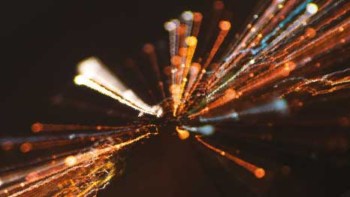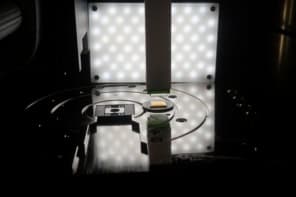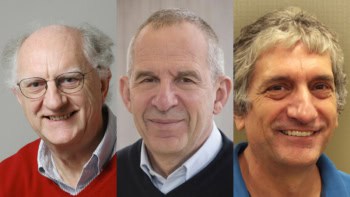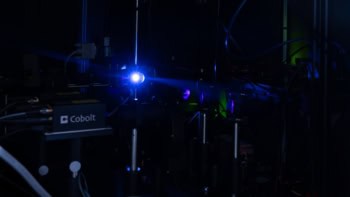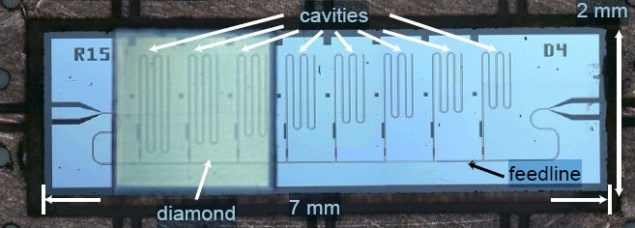
Three independent groups of physicists have made important progress towards exchanging quantum information between microwave circuits and ensembles of spins. The breakthroughs could lead to hybrid quantum bits that could make it much easier to develop practical quantum computers. Such devices, which are based on quantum-mechanical concepts such as entanglement could, in principle, outperform conventional computers on certain tasks.
The ideal quantum bit, or qubit, would possess two important properties. One is that its value can be easily read and written; and the other is that its quantum nature endures long enough for a calculation to be performed. The most robust qubits tend to be those that are well isolated from their surroundings because this prevents their quantum nature from deteriorating via contact with the noisy outside world. But if a qubit is too isolated it becomes very difficult to read and write to the qubit, rendering it useless in a practical quantum computer.
Best of both worlds
One way around this dilemma is to build qubits out of two physical entities – one that is robust and another that is easy to interact with. The challenge in creating such hybrid qubits is knowing how to transfer quantum information between the two components. That problem is the subject of new research, which looks at how to couple the spins of either electrons or nuclei (which can retain quantum information for relatively long periods) with superconducting qubits (which are easy to control using electrical and microwave pulses).
One team led by Robert Schoelkopf at Yale University in the US has coupled a superconducting microwave cavity to electron spins that are isolated within two crystals – ruby and diamond – with small concentrations of magnetic impurities. A second team – led by Daniel Esteve at France’s Atomic Energy Commission (CEA) in Saclay, near Paris – did the same using a diamond with a different type of impurity. Both studies involved coupling to a relativity large number of electron spins (about 1012 at Yale) to boost the interaction strength between spins and microwaves.
Flipping back and forth
The teams achieved the coupling by placing the crystals next to tiny superconducting cavities that resonate at a specific microwave frequency. In each case, a magnetic field was applied to the sample, which aligns the spins and sets the energy required to flip the direction of a spin. When this energy matches the energy of the microwaves in the cavity, the spins can flip back and forth in what is called a Rabi oscillation.
This process involves the exchange of photons between spins and cavity, which could provide a mechanism for exchanging quantum information between an ensemble of spins and a superconducting qubit attached to a microwave line. According to Yale’s David Schuster, a number of qubits could be stored in such an ensemble of spins by encoding information in quantum states with different phases.
Nuclear spins are even better
Meanwhile, at the University of Oxford in the UK, Andrew Briggs and an international team of colleagues (including Yale’s Schuster and Schoelkopf) have shown that a number of different microwave modes can be stored simultaneously in a spin ensemble. This team has also come up with a way of transferring quantum information from an ensemble of electron spins to an ensemble of nuclear spins. The big advantage of nuclear spins is that they are even more isolated than electron spins and so could store quantum information for several seconds before being transferred to superconducting qubits.
The Oxford group looked at the electron spins of nitrogen atoms in a fullerene cage of carbon atoms and also in silicon crystals doped with phosphorous atoms. The team first encoded up to 100 different multiple-photon excitations in their electron spin ensemble by applying short magnetic pulses to the spins. They were also able to retrieve the excitations. Although the Oxford group did not store or retrieve quantum information from single microwave photons – which would be needed in a quantum computer – the work suggests that this should indeed be possible.
Hyperfine interactions
Briggs and colleagues were able to transfer the encoded excitations from electron spins to the material’s nuclear spins and then back again. This is done by exploiting the “hyperfine” interaction between the nuclear spins and the spin of the electrons.
While the three groups have made important progress towards creating hybrid qubits, physicists must still work out how to store information from single photons in a spin ensemble, and how to connect the microwave-spin systems to a superconducting qubit. “Getting all of these things to happen at the same time is one of the goals of this research area moving forward,” explains Schuster.
